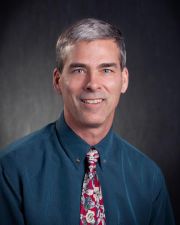This past August as I was exiting my third floor classroom at the University of Washington School of Medicine I could hear a noise coming up the staircase. The sounds were weird, and it took me a second to identify them. There were voices and lots of them. As I descended the stairs and the voices grew louder, the excitement of the gathering was almost palpable. I reached the bottom of the stairs and waded in to a happy throng of second year medical students. There were joyful greetings and high fives all around. It was only their second gathering as a class, and it had been nearly a year and a half since I had seen them together. Despite our masks, the power and emotions of interacting face to face were overwhelming.
The state of Washington was ground zero for COVID-19 in the United States in March of 2020, and our faculty had transitioned to 100% virtual learning in the space of a scant 2 weeks. We were not unique, and Daniel et al. have cited “The tremendous activity in the realms of pivoting to online learning.” While our students and faculty seemingly adjusted, instructors were worried: Would students engage with the material? Would they learn it? Could they apply it? The answer appeared to be yes. Our qualitative and quantitative performance assessments seemed to be on par compared to previous years. Yet something was missing. We all felt it.
I was surprised that our students felt it too. After all, this generation had been exposed to an average of 4 hours of screen time per day, and wired for instant gratification through 6 second Vine videos and brief Twitter posts. But I noticed they often talked hopefully about a return to in person learning. Did these digital natives miss face to face contact as much as I did? The answer turned out to be a resounding yes. In fact, 85% our students chose in person learning when this option became available. For digital immigrants like myself this was deeply reassuring. It meant that I was not pining for in person learning because I was a relic from a bygone era of pencils, notebooks and whiteboards. I have come to understand that students are excited to return to in person learning due to the fundamental need of our species for face to face interaction.
A study by Saraswathi et al. may have captured this effect. Among medical students who completed the 21 Item Depression Anxiety Stress Scale (DASS21) before and during COVID-19, they found a significant increase in the prevalence and level of anxiety and stress. In addition, Rabe et al. have noted: “Emotional and mental health issues were also heightened among students and faculty members” during the pandemic.
My silver lining in the midst of these pandemic storm clouds stems from a deeper appreciation for what was taken from us: our inherent need for direct contact with other people in real time. While I am a medical educator dedicated to staying current with evidence based techniques and the latest technology, I often reflect on the significance of our need for live interactions with other humans; it is a need that is shared by digital natives as well as digital immigrants. It transcends both generations and degrees of technical literacy.
As we contemplate the scope and role of virtual learning in a post pandemic world let us take a moment to reflect on this most fundamental attribute of our species: face to face interaction with other humans is critical for adding meaning to the human experience. If that is lost, then what? What might we find at the bottom of the staircase? Comment below and share your insights!
Did you know that the Harvard Macy Institute Community Blog has had more than 290 posts? Previous blog posts have explored topics including lessons from a mobile classroom, reimagining the visiting professorship during a pandemic, and virtual mentoring.
Charles Sumner Charman


